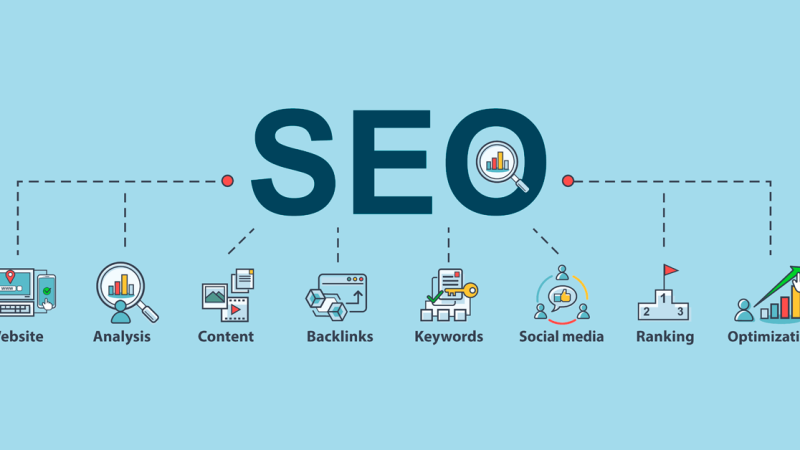Data Overload: Making Sense of Big Data in B2B Decision-Making

Introduction
In the era of digital transformation, businesses are inundated with vast amounts of data from various sources. This phenomenon, commonly referred to as “big data,” presents both opportunities and challenges for B2B decision-making. While big data can provide invaluable insights and drive strategic decisions, the sheer volume and complexity of the data can lead to overload, making it difficult for businesses to extract actionable information. This article explores the concept of data overload in B2B decision-making and provides practical strategies to make sense of big data for improved business outcomes.
Understanding Data Overload
Data overload occurs when the volume of data exceeds an organization’s ability to process and utilize it effectively. In a B2B context, data can come from numerous sources, including customer interactions, sales transactions, market trends, and social media activities. The challenge lies in sifting through this data to identify relevant patterns, trends, and insights that can inform business decisions.
The consequences of data overload can be significant. Decision-makers may struggle to prioritize information, leading to analysis paralysis where no decisions are made due to the overwhelming amount of data. Alternatively, they might make hasty decisions based on incomplete or inaccurate information, resulting in suboptimal outcomes. Therefore, it is crucial for B2B organizations to develop strategies to manage and make sense of big data effectively.
The Role of Technology in Managing Big Data
Technological advancements play a pivotal role in helping businesses manage and analyze big data. Here are some key technologies that are instrumental in overcoming data overload:
Data Management Platforms (DMPs): These platforms aggregate data from various sources, providing a centralized repository for data storage and management. DMPs help businesses organize data, making it easier to access and analyze.
Data Analytics Tools: Advanced analytics tools, including machine learning algorithms and artificial intelligence (AI), can process large datasets to uncover hidden patterns and insights. These tools enable businesses to perform predictive analytics, identify trends, and make data-driven decisions.
Visualization Software: Data visualization tools transform complex data into visual formats such as charts, graphs, and dashboards. This makes it easier for decision-makers to understand and interpret data, facilitating quicker and more informed decisions.
Cloud Computing: Cloud-based solutions offer scalable storage and processing power, allowing businesses to handle large volumes of data without investing in expensive infrastructure. Cloud computing also enables real-time data analysis, which is crucial for timely decision-making.
Strategies for Making Sense of Big Data
While technology is essential, it is not sufficient on its own to tackle data overload. Businesses need to adopt comprehensive strategies that encompass people, processes, and technology. Here are some effective strategies for making sense of big data in B2B decision-making:
Define Clear Objectives
Before diving into data analysis, businesses must define clear objectives. What specific questions are they trying to answer? What business problems are they aiming to solve? By setting clear goals, businesses can focus their data analysis efforts on relevant data, reducing the risk of being overwhelmed by unnecessary information.
Implement Data Governance
Data governance involves establishing policies and procedures for data management, including data quality, privacy, and security. Effective data governance ensures that data is accurate, consistent, and reliable, which is crucial for making informed decisions. It also helps in standardizing data across the organization, making it easier to analyze and interpret.
Invest in Talent
Having the right talent is essential for making sense of big data. Data scientists, analysts, and IT professionals with expertise in data management and analytics are invaluable assets. These professionals can design and implement data strategies, interpret complex data, and provide actionable insights. Additionally, continuous training and development programs can help keep the team updated with the latest tools and techniques.
Foster a Data-Driven Culture
A data-driven culture encourages employees at all levels to base their decisions on data rather than intuition or experience alone. This requires promoting data literacy across the organization, ensuring that employees understand the importance of data and are capable of interpreting it correctly. Leaders play a crucial role in modeling data-driven behavior and reinforcing the value of data in decision-making.
Leverage Automation
Automation can significantly reduce the burden of data processing and analysis. Automated data collection, cleansing, and integration processes can streamline data management, freeing up resources to focus on analysis and interpretation. Automation tools can also provide real-time insights, enabling businesses to respond quickly to changing market conditions.
Sales Case Studies: Harnessing Big Data for B2B Success
Sales case studies offer practical examples of how businesses have successfully leveraged big data to drive sales and improve decision-making. Here are a few case studies that illustrate the power of big data in B2B contexts:
IBM’s Predictive Analytics for Sales Forecasting
IBM implemented a predictive analytics solution to improve its sales forecasting accuracy. By analyzing historical sales data, market trends, and customer behavior, IBM’s analytics team developed models that could predict future sales with high accuracy. This allowed the company to optimize its inventory management, align its sales strategies with market demands, and improve customer satisfaction.
Dell’s Data-Driven Marketing Campaigns
Dell used big data analytics to enhance its marketing campaigns. By analyzing customer data from various touchpoints, including website interactions, social media, and purchase history, Dell identified key customer segments and tailored its marketing messages accordingly. This data-driven approach resulted in higher engagement rates, increased lead generation, and improved sales conversion rates.
GE’s Industrial Internet Initiative
General Electric (GE) leveraged big data analytics as part of its Industrial Internet initiative to improve the performance and efficiency of its industrial equipment. By collecting and analyzing data from sensors embedded in machinery, GE was able to predict equipment failures, schedule proactive maintenance, and optimize operational performance. This not only reduced downtime and maintenance costs but also enhanced customer satisfaction by ensuring reliable equipment performance.
Business Venture Capital: The Intersection of Big Data and Investment Decisions
In the realm of business venture capital, big data is becoming increasingly important for making informed investment decisions. Venture capital firms are leveraging big data analytics to identify promising startups, assess market potential, and mitigate investment risks. Here are some ways big data is transforming business venture capital:
Identifying Investment Opportunities
Venture capital firms use big data to identify emerging trends and sectors with high growth potential. By analyzing data from market research reports, social media, and industry publications, investors can spot early signals of innovation and identify startups that are poised for success.
Evaluating Startup Potential
Big data analytics enables venture capitalists to assess the potential of startups more accurately. By analyzing data on a startup’s financial performance, customer base, and market traction, investors can make more informed decisions about which startups to fund. This reduces the risk of investing in ventures that may not deliver expected returns.
Enhancing Due Diligence
Due diligence is a critical part of the investment process, and big data can enhance its effectiveness. By integrating data from various sources, including financial statements, customer reviews, and industry benchmarks, venture capitalists can conduct comprehensive due diligence, uncovering potential risks and opportunities that may not be apparent from traditional analysis methods.
Monitoring Portfolio Performance
After making an investment, venture capital firms need to monitor the performance of their portfolio companies. Big data analytics provides real-time insights into key performance indicators (KPIs), allowing investors to track progress, identify issues, and provide timely support to their portfolio companies.
Also Read: Detailed analysis of location analytics market
Conclusion
Data overload is a significant challenge for B2B organizations, but with the right strategies and technologies, it is possible to make sense of big data and leverage it for effective decision-making. By defining clear objectives, implementing robust data governance, investing in talent, fostering a data-driven culture, and leveraging automation, businesses can turn data into a strategic asset.
Sales case studies demonstrate the tangible benefits of big data in driving sales and improving business outcomes, while the intersection of big data and venture capital highlights how data-driven insights are transforming investment decisions. As businesses continue to navigate the complexities of the digital age, the ability to manage and make sense of big data will be a critical determinant of success.






